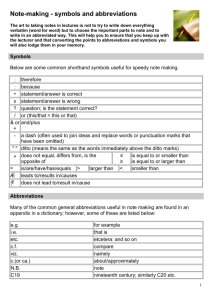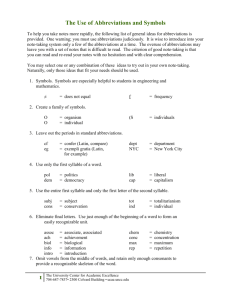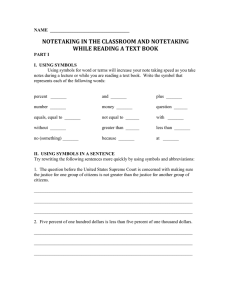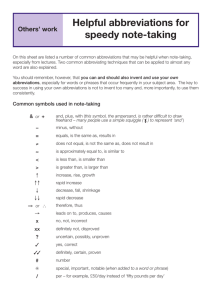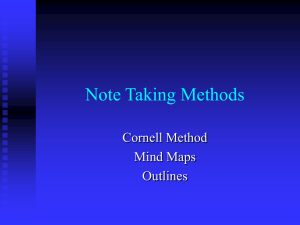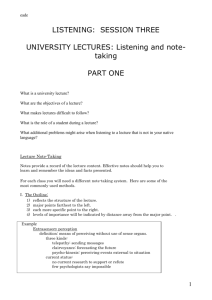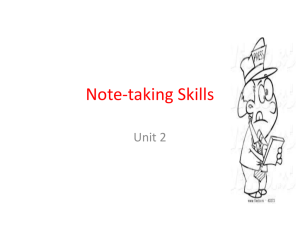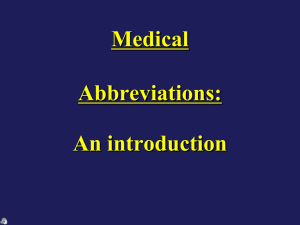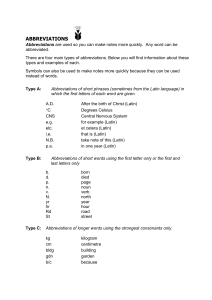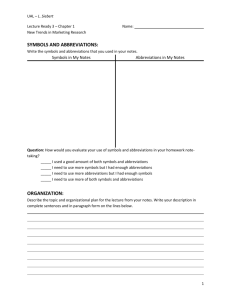Note-Taking Abbreviations: A Learning Guide
advertisement
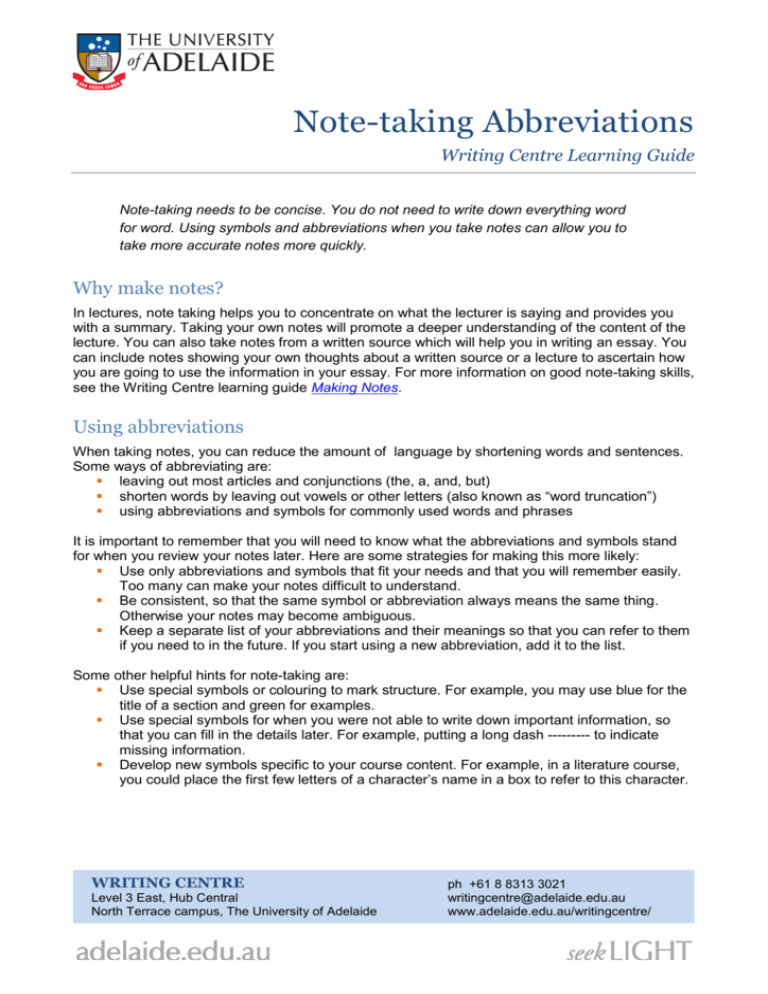
Note-taking Abbreviations Writing Centre Learning Guide Note-taking needs to be concise. You do not need to write down everything word for word. Using symbols and abbreviations when you take notes can allow you to take more accurate notes more quickly. Why make notes? In lectures, note taking helps you to concentrate on what the lecturer is saying and provides you with a summary. Taking your own notes will promote a deeper understanding of the content of the lecture. You can also take notes from a written source which will help you in writing an essay. You can include notes showing your own thoughts about a written source or a lecture to ascertain how you are going to use the information in your essay. For more information on good note-taking skills, see the Writing Centre learning guide Making Notes. Using abbreviations When taking notes, you can reduce the amount of language by shortening words and sentences. Some ways of abbreviating are: leaving out most articles and conjunctions (the, a, and, but) shorten words by leaving out vowels or other letters (also known as “word truncation”) using abbreviations and symbols for commonly used words and phrases It is important to remember that you will need to know what the abbreviations and symbols stand for when you review your notes later. Here are some strategies for making this more likely: Use only abbreviations and symbols that fit your needs and that you will remember easily. Too many can make your notes difficult to understand. Be consistent, so that the same symbol or abbreviation always means the same thing. Otherwise your notes may become ambiguous. Keep a separate list of your abbreviations and their meanings so that you can refer to them if you need to in the future. If you start using a new abbreviation, add it to the list. Some other helpful hints for note-taking are: Use special symbols or colouring to mark structure. For example, you may use blue for the title of a section and green for examples. Use special symbols for when you were not able to write down important information, so that you can fill in the details later. For example, putting a long dash --------- to indicate missing information. Develop new symbols specific to your course content. For example, in a literature course, you could place the first few letters of a character’s name in a box to refer to this character. WRITING CENTRE Level 3 East, Hub Central North Terrace campus, The University of Adelaide ph +61 8 8313 3021 writingcentre@adelaide.edu.au www.adelaide.edu.au/writingcentre/ Examples of word truncations ppl people res research natl national eqn equation ed education gov government dep department esp especially ustand understand Common symbols and abbreviations ∵ because ∴ therefore OR consequently + and OR plus ? question OR doubt OR possibility > greater than < less than # no. number $ dollars OR money OR cost ∆ change per OR each increase OR improvement leads to OR causes decrease OR deterioration linked OR interrelated OR connected ↛ does not lead to = equal OR the same as ~ approximately OR around OR similar to not equal OR not the same as X 2 & strikethrough not varies with OR related to etc. OR missing words etc. etcetera; and so on et al. and the other authors eg for example ie that is NB * note well OR remember this ♂/♀ male / female § section ¶ para paragraph p. / pp. page / pages c with / about (circa) w/o ̅ without 1st / 2nd / 3rd / 4th first / second / third / fourth @ at cf. compare to am morning pm afternoon viz namely asap as soon as possible wrt with respect to Other useful resources Websites http://www.dartmouth.edu/~acskills/success/notes.html http://tutorials.istudy.psu.edu/notetaking/ Printables http://www.sfu.ca/content/dam/sfu/computing/Undergraduate_students/AEP-files/NoteTaking.pdf www.dlsweb.rmit.edu.au/lsu/content/1_StudySkills/study_pdf/notetaking_lecture.pdf www.sl.psu.edu/Documents/Note_Taking_Strategies.pdf See also the Writing Centre learning guide Making Notes. © The University of Adelaide 2014 3
